Jing'an Temple Shanghai: History, Highlights & Visiting Tips (2025)
Unique values of Jing’an Temple
Historical Uniqueness
Jing’an Temple stands as Shanghai’s oldest Buddhist temple (dating back to 247 CE) and one of China’s most expensive religious sites, with an estimated total value exceeding ¥5.8 billion due to its prime urban location and lavish gold-plated structures. Unlike typical temples nestled in mountains, it thrives amid skyscrapers on Nanjing Road - a rare fusion of spirituality and modernity. Recognized as a Shanghai Municipal Cultural Relic Protection Unit, its architecture blends Song Dynasty symmetry with Tibetan Buddhist elements, notably the 63-meter golden pagoda towering over the city skyline.
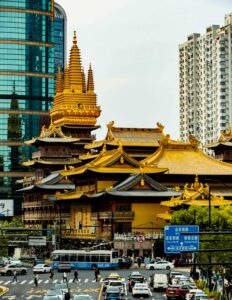
Cultural Resonance
Imagine incense swirling beneath golden eaves while neon lights flicker beyond temple walls. Here, monks chant ancient sutras to the rhythm of subway trains. This is where 1,700 years of Zen serenity collides with 21st-century urbanity—a sanctuary for reflection amid Shanghai’s relentless pulse.
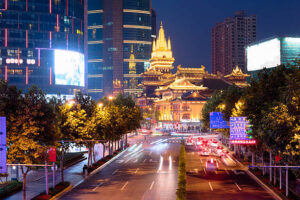
Temple Layout & Treasures
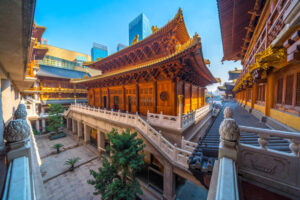
Location & Structure
Jing’an Temple is located on West Nanjing Road in Shanghai’s bustling downtown, yet its golden splendor creates an oasis of serenity. The temple follows a "Hui"-style layout, with the Mountain Gate, Heavenly King Hall, Grand Hall, and Three Saints Hall along the central axis, flanked by bell and drum towers and a Guanyin Hall, reflecting traditional Han Buddhist monastery design.
Architectural Style
-
Exterior: The main halls feature double-eaved hip roofs in the Song Dynasty Yingzao Fashi tradition, but are entirely clad in golden copper tiles (38 tons total), gleaming like a celestial palace by day and dazzling under night lights.
-
Details: Bronze wind chimes hang from the eaves, while window lattices are carved with verses from the Lotus Sutra, blending traditional woodwork with modern metal craftsmanship.
Hall Highlights
-
Mountain Gate
There are a pair of Tang-style stone lions flank the gate: the left playing with a ball symbolizes power, and the right cradling a cub symbolizes compassion.The inscribed name "Jing’an Temple" was calligraphed by Zhao Puchu, with a jadeite lotus relief framing the plaque.
-
Grand Hall
Inside is a 15-ton white jade Buddha statue from Myanmar presides , whose mandorla is inlaid with cloisonné apsaras. And each base of the four African padauk wood pillars there is engraved with the full Diamond Sutra, micro-carved.
-
Guanyin Hall
It features the thousand-armed Guanyin statue, gilded in pure gold and holding ritual objects that are actual Ming Dynasty relics (originally from Putuo Mountain).The ceiling’s caisson dome depicts a star chart matching Guanyin’s birthday celestial alignment.
Six Must-See Treasures
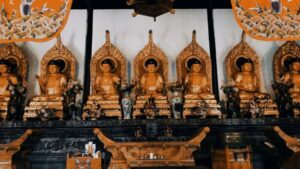
-
The Diamond Sutra Stone Tablets
You'll find twelve remarkably preserved stone slabs in the Scripture Library, each delicately carved with Buddhist texts and lotus motifs. What makes them extraordinary? They're identical to the sacred texts once hidden in Hangzhou's legendary Leifeng Pagoda, commissioned by a 10th century king.
-
The Yongle Bell
This massive 2.5-meter bell near the entrance isn't just beautiful - its morning chime once echoed across imperial Nanjing. Look closely and you'll spot elegant Sanskrit and Chinese characters covering its surface.
-
The Jade Reliquary
In the Three Saints Hall, monks carefully preserve a delicate green jade tower containing what may surprise you - an actual tooth relic of the Buddha. Originally part of Beijing's imperial collection, it's now one of the temple's most revered objects.
-
The Golden Sutras
Imagine 108 deep blue volumes, each page shimmering with gold-lettered Tibetan scriptures. This priceless set was personally gifted by the Panchen Lama in 1959. While normally kept protected, portions are displayed during the Buddha's Birthday celebrations annually.
-
The Gilded Tara Statue
This exquisite 40cm Tang Dynasty treasure, surrounded by twenty-one smaller goddess figures, has an incredible backstory. After being lost for centuries, it was recovered from the famous Dunhuang caves. The Augmented Reality display nearby brings its original worship context to life in a way that must be seen.
-
The Ashoka Pagoda
Hidden beneath the main altar lies what might be the temple's most mysterious artifact - a silver and gold pagoda topped with a Sri Lankan sapphire. Discovered during renovations in the 1930s, it's only accessible on the 1st and 15th of each lunar month.
Worship Protocol

Prayer Types & Corresponding Halls
-
Studies/Wisdom
-
Grand Hall: Pray to Sakyamuni Buddha for exam success.
-
Manjushri Hall (if available): Dedicated to the Wisdom Bodhisattva.
-
-
Career/Wealth
-
Heavenly King Hall: Skanda Bodhisattva protects careers; Treasure Buddha symbolizes abundance.
-
Wealth God Hall: Some temples have a separate shrine for Guan Yu or Caishen.
-
-
Health/Safety
-
Medicine Buddha Hall: For healing and longevity.
-
Guanyin Hall: The Compassion Bodhisattva aids in crises.
-
-
Love/Family
-
Guanyin Hall: Especially popular among women for relationship blessings.
-
Matchmaker Shrine (in some temples): Specifically for marital prayers.
-
-
Ancestral Peace
-
Ksitigarbha Hall: For memorials and ancestral dedications.
-
Where to Get Incense
-
Entrance Area: Free incense (usually 3 sticks per person).
-
Temple Gift Shop: Premium sandalwood/agarwood incense (¥20–100).
-
Note:
-
Avoid bringing low-quality incense; some temples prohibit it.
-
Eco-friendly "e-incense" is becoming popular.
-
Cncense Offering Etiquette
-
Holding Incense:Left hand (considered "clean" in Buddhism), tips upward, right hand supporting.
-
Lighting & Placing:
-
Lighting: Use candle flame; wave gently to extinguish (no blowing).
-
Inserting:
-
3 sticks: Center first (Buddha), then right (Dharma), left (Sangha).
-
1 stick: Center only, symbolizing single-minded devotion.
-
-
-
Bowing:
-
Hands in prayer position, raise to forehead, bow three times.
-
If kneeling: Palms up (receiving blessings), touch forehead, lips, and chest.
-
Tour Guide
Basic Information
-
Opening: 7:30 AM–5:00 PM daily; night illuminations 6:00–10:00 PM (Fri/Sat)
-
Tickets: ¥50 (free on lunar 1st/15th days). Purchase via WeChat mini-program or onsite.
-
Guides: ¥100–¥200 (audio guides in English; deposit ID).
-
Attire: Cover shoulders/knees. No flash photography indoors.
-
Accessibility: Ramps available; wheelchairs provided free.
Transportation
-
Metro: Lines 2/7 to Jing’an Temple Station (Exit 5), 3-min walk.
-
Bus: Routes 37, 62, 838 to West Nanjing Road Station.
Accommodation
-
Luxury: Jing’an Shangri-La (¥2,500+/night; 5-min walk).
-
Mid-range: Citadines Jing’an (¥800/night; 8-min walk).
Around the Temple
Nearby Cuisine
-
Soup Dumplings (Xiaolongbao)
📍 Restaurant: Jia Jia Tang Bao
-
Flavor: Thin-skinned, juicy, with a delicate balance of sweetness and umami.
-
Price: Pork xiaolongbao ¥35 (8 pcs), Crab roe xiaolongbao ¥60 (8 pcs).
-
Distance from Jing’an Temple: 800m (10 min walk), 90 Huanghe Rd.
-
Scallion Oil Noodles (Cong You Ban Mian)
📍 Restaurant: Old Place Noodle House
-
Flavor: Fragrant scallion oil coating chewy noodles, slightly sweet and savory.
-
Price: ¥15 (add toppings like spicy pork or tofu for ¥5–10).
-
Distance: 500m (6 min walk), 233 South Xiangyang Rd.
-
Braised Pork (Hong Shao Rou)
📍 Restaurant: Old Jesse
-
Flavor: Melt-in-your-mouth pork belly in a glossy, sweet-soy reduction.
-
Price: ¥98 (reservation recommended).
-
Distance: 1.5km (5 min taxi), 41 Tianping Rd.
Other Attractions
-
Jing'an Sculpture Park
A tranquil urban oasis blending modern art with nature
Distance: Adjacent (right across the street, 1-minute walk) | Visiting Time: 30–60 minutes.
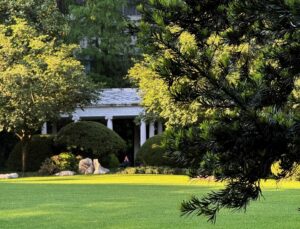
-
Nanjing West Road
One of Shanghai’s premier shopping streets
Distance: 300m (5-minute walk south) | Visiting Time: 1–3 hours (shopping/dining focus).
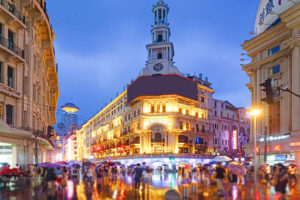
-
Zhang Garden
A restored 19th-century shikumen (stone-gate) neighborhood
Distance: 1.2 km (15-minute walk / 5-minute metro ride) | Visiting Time: 1–2 hours.
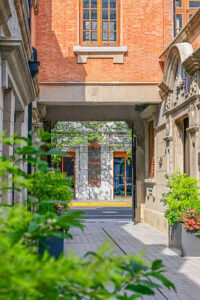
City Walk: Timeless Shanghai
"In Shanghai, every alley hums with stories."
Start at Jing’an Temple → Stroll Nanjing Road’s Art Deco facades → Detour to Zhang Yuan’s 1920s shikumen → End at Xintiandi’s cocktail bars.
Why? This compact 1.5km route traces Shanghai’s metamorphosis from treaty-port era to global metropolis,traverse dynastic piety, colonial glamour, and millennial chic.It's walkable in 45 minutes but worthy of a half-day’s lingering, revealing how Shanghai constantly reinvents its past.
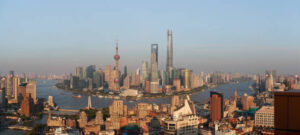
Don't Hesitate Anymore: Jing'an Temple Beckons Your Yaste of Shanghai’s Soul
Jing’an Temple isn’t merely a site — it’s Shanghai’s soul carved in gold and stone. From whispered prayers to clinking coffee cups, it embodies a city forever dancing between reverence and reinvention. So come trace the dance steps yourself : Sip serenity in temple shadows, then toast to Shanghai’s rhythm just steps away — your seat at this cultural fusion awaits.
-
Extended Resources
